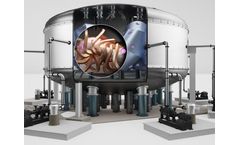Refine by
Power Generation Technologies Articles & Analysis: This-Year
6 news found
As data centers grow in scale and energy intensity fueled by AI, hyperscale growth, and global digital demand the need for efficient, resilient, and sustainable energy infrastructure is greater than ever. While electric-only backup systems have dominated historically, Combined Cooling, Heat and Power (CCHP) offers a compelling alternative: one that cuts costs, boosts resilience, and delivers ...
Organix Energy Inc., a Canada-based renewable energy project developer, and Clarke Energy Bangladesh Ltd., a Rehlko Company and global leader in distributed power generation solutions, have signed a Memorandum of Understanding (MoU) to collaborate on renewable energy initiatives in Bangladesh. This partnership signifies a shared commitment to promoting cleaner energy, reducing greenhouse gas ...
By properly architecting Infinity Two, Type One Energy is creating a proprietary fusion power plant design that supports a compelling 2-year power plant operating cycle separated by 30-day planned maintenance outages using today’s existing materials and enabling technologies. The company also made use of its partner-rich commercialization program ...
Provisional assessment shows potential for 135 gigawatts of baseload power – if current technology works at scale in Nevada and 5 adjoining states. The projected 10 percent would be a major increase, as geothermal energy currently generates less than 1 percent of the nation’s power supply. The new assessment, which ...
Clarke Energy is proud to play a key role in Morocco’s energy future through our involvement in the Tendrara gas field project. This strategic initiative, undertaken in collaboration with Italfluid Geoenergy Srl, will enhance the country’s energy security and infrastructure. Delivering Reliable Power Solutions To support this vital project, Clarke Energy has supplied and installed ...
With the energy transition underway, many businesses and countries throughout the world have committed to reaching net-zero emissions by 2050. To reach this decarbonization goal, we will need to address one of the largest sources of greenhouse gas (GHG) emissions: the production of electricity and heat, which accounts for approximately 73% of our global emissions. Just as a beautiful symphony ...






